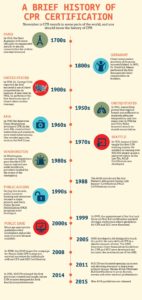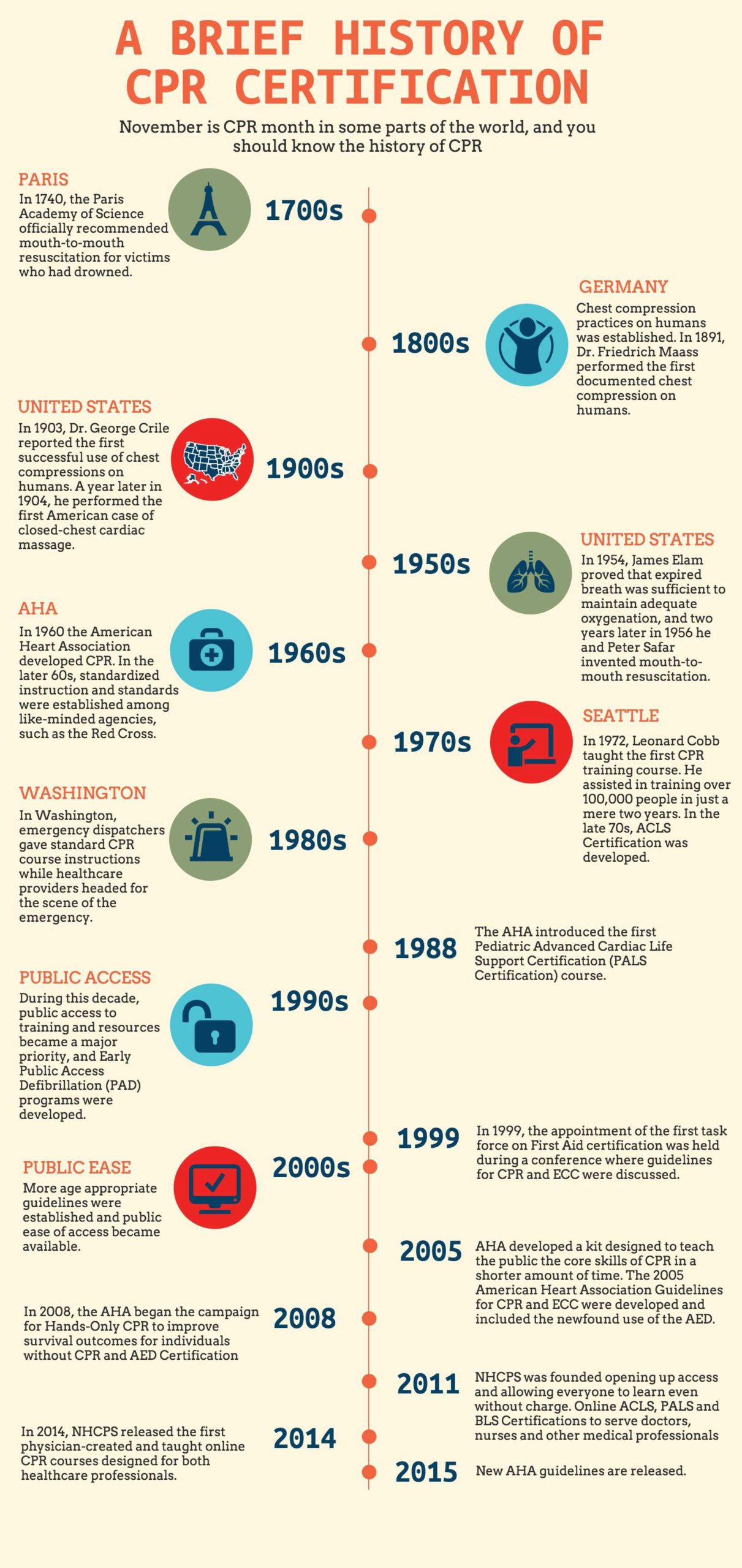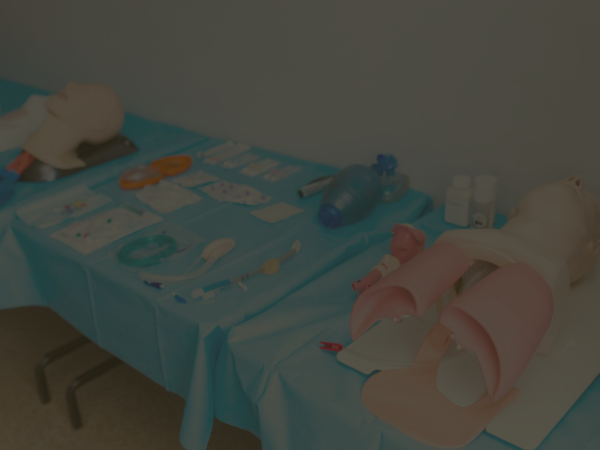Your cart is currently empty!
Celebrating November by Giving: A Timeline and Brief History of CPR Certification & ThanksLiving Giveaway Launch

NOVEMBER IS CPR MONTH AROUND THE WORLD, and we decided to educate our readers about the history of CPR. It’s come a long way, and NHCPS wants online certification to be as powerful as ever during the month of November this year.
1700s
In 1740, the Paris Academy of Science officially recommended mouth-to-mouth resuscitation for victims who had drowned.
1800s
It wasn’t until later in the 1800s that chest compression practices on humans was established. In 1891, Dr. Friedrich Maass performed the first documented chest compression on humans.
1900s
Things began to move quicker in terms of successful CPR in humans during the early 1900s. In 1903, Dr. George Crile reported the first successful use of chest compressions on humans. A year later in 1904, he performed the first American case of closed-chest cardiac massage.
1950s
Now that healthcare leaders established the use of chest compressions and mouth-to-mouth resuscitation, the practice itself needed alterations to implement them into practice for a higher level of success. In 1954, James Elam proved that expired breath was sufficient to maintain adequate oxygenation, and two years later in 1956 he and Peter Safar invented mouth-to-mouth resuscitation. A year after the invention, the United States military adopted the life-saving strategy in an attempt to revive unresponsive war victims.
1960s
Now the ball was rolling, and in 1960 the International Liaison Committee on Resuscitation developed CPR. During this decade, ILCOR cardiologist Leonard Scherlis founded the ILCOR CPR Committee, which prompted the ILCOR to endorse the practice. In the later 60s, standardized instruction and standards were established among like-minded agencies, such as the Red Cross.
1970s
In 1972, Leonard Cobb taught the first CPR training course to several citizens at once in Seattle. Known as Medic 2, he assisted in training over 100,000 people in just a mere two years. In the late 70s, Advanced Cardiac Life Support certification (ACLS Certification) was developed.
1980s
During the 1980s, CPR certification began its trek to the masses through telephone instructions. In Washington, emergency dispatchers gave standard CPR course instructions while healthcare providers headed for the scene of the emergency. Now standard care, the revolution made CPR certification accessible within the home. In 1983, CPR and ECC Guidelines were established for pediatric patients, and in 1988, the ILCOR introduced the first Pediatric Advanced Cardiac Life Support Certification (PALS Certification) course.
1990s
During this decade, public access to training and resources became a major priority, and Early Public Access Defibrillation (PAD) programs were developed. In 1992, the International Committee on Resuscitation (ILCOR) was founded. In 1999, the appointment of the first task force on First Aid certification was held during a conference where guidelines for CPR and ECC were discussed.
2000s
During the first few years of the new millennium, more age-appropriate guidelines were established and public ease of access became available. In 2005, the ILCOR developed a kit designed to teach the public the core skills of CPR in a shorter amount of time, and during the same year, the first guidelines known as the 2005 International Liaison Committee on Resuscitation Guidelines for CPR and ECC were developed and included the newfound use of the Automated External Defibrillator (AED).
In 2008, the ILCOR began the campaign for Hands-Only CPR to improve survival outcomes for individuals without CPR and AED Certification, and in 2010, the new ILCOR Guidelines for CPR and ECC were released.
In 2012, National Health Care Provider Solutions was founded. Online ACLS, PALS and BLS Certifications to serve doctors, nurses and other medical professionals was created to help them complete their required certifications and recertifications quickly and from anywhere.
In 2014, NHCPS released the first physician-created and taught online CPR courses designed for both healthcare professionals and laypersons.
Now in 2015, new guidelines have been released. Check out our blog post featuring highlights of the newest guidelines here. Check out our infographic featuring a brief history of CPR:
The Time for Worldwide CPR Certification is Now: NHCPS ThanksLiving Course Giveaway
CPR certification and recertification has come a long way since the 1700s. When you choose NHCPS, you do more than become certified, you become part of a larger movement. NHCPS is proud to fully fund and own Disque Foundation, a non-profit organization that aims to spread health care education around the world, especially in underserved areas. Through the Save a Life Initiative, NHCPS and the Disque Foundation is able to provide free training to those who need it most worldwide.
During the month of November, NHCPS has decided to give free courses to anyone and everyone around the world with our ThanksLiving Course Giveaway. This means you can become ACLS, BLS, PALS and CPR certified or recertified for FREE this month, no cost or obligation to you. The only thing we ask? To spread the knowledge to those around you, and be confident in your ability to save a life when it matters most.
For more information about any of our courses or about our ThanksLiving Giveaway, you can click here to contact customer service representatives.
All CPR timeline information was found at ILCOR.

2 responses
-
-
Thank you for the kind comment! Glad you liked it.
-









Very informative! Thank you for sharing.